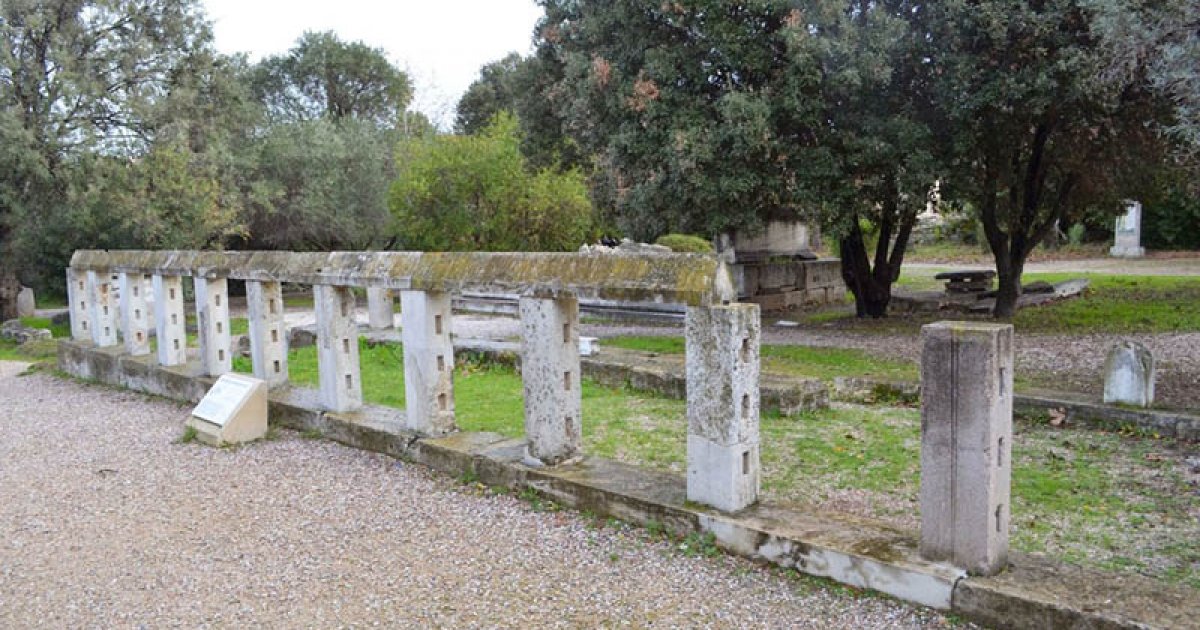AGORA, Eponymous Heroes
 Language: English / USA
Language: English / USA
The “Monument of the Eponymous Heroes” was built in honor of the ten heroes who, legend has it, gave their names to the ten tribes that once lived in Attica, the region Athens is part of.
Only the base and the fence can be seen today, with a row of rectangular pillars perforated on the sides. This structure originally supported the statues of the ten heroes.
This work celebrates the origins of the city, and was used to display the most important communications addressed to its citizens. At the foot of the statues, wooden tablets were placed with new laws, accusations, sentences and everything else that regarded public life.
Behind the monument, at the foot of the temple of Hephaestus, you’ll find the remains of a building called the Bouleuterion, which housed the boule, or council of citizens, composed of 500 members, which set the agenda for the public assemblies.
2500 years ago, the Agora was the heart of political life in Athens, founded on democracy, in which some 35,000 people took part, i.e. all eligible male citizens.
Each decision was decreed at the end of an assembly.
The low circular walls you can see belonged to the Tholos, a circular edifice used for the meetings of the 50 Prytaneis, the representatives of one of the ten tribes that took turns exercising power. It was here that the sacred fire was kept permanently lit, and where the official weights and measures were kept as a benchmark for the products sold at the market.
Now press pause, and enjoy a stroll through the ruins of the Agora until you reach the Church of the Holy Apostles at the end of it.
This church, a magnificent, marvelously proportioned example of Byzantine architecture, was built around the year 1000, in the heart of the Agora. Once inside, you’ll get a better idea of its centrally planned structure, typical of Eastern churches, which renders all four sides symmetrical. The altar is thus placed at the center, symbolizing the idea that salvation is never far away. Byzantine churches are therefore built upwards rather than outwards.
An interesting fact: when extraordinary assemblies were called, citizens were summoned by a trumpet, while country-dwellers were informed by smoke signals from a large bonfire lit in the agora.



